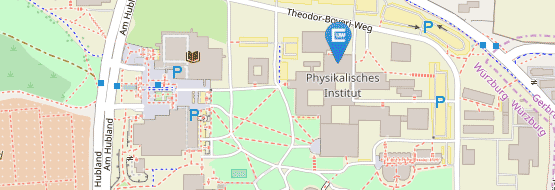A06
Competing symmetries and disorder in topological materials
Summary
Understanding the stability of edge and surface states of topological materials under breaking of dif- ferent symmetries or in the presence of disorder is at the heart of this SFB 1170 proposal. Moreover, competing topologies originating from quantum Hall (QH) and quantum anomalous Hall effects (QAH) as well as crystalline topologies in two spatial dimensions can lead to new transport phenomena. In the second funding period of the SFB 1170, we have studied, within this project, the crystalline sym- metries which enhanced the topological protection of hexagonal time-reversal topological insulators (TIs) and Weyl semimetals, as well as we have understood how this protection is lifted when the edge states overlap. In the third funding period, we will extend this analysis to new triangular lattices based topological insulators as well as higher-order topological insulators where time-reversal symmetry (TRS) and crystalline symmetries compete. Further, we will study the role of magnetic impurities and the formation of the QAH effect in these materials. During the second funding period, we have ana- lyzed theoretically two-dimensional QAH systems (systems with one chiral edge state originating from an inverted band structure) and shown that the spectral asymmetry is related to the parity anomaly (spontaneous parity symmetry breaking for an odd number of massless Dirac systems in two spatial dimensions). This effect should appear in paramagnetic materials like (Hg,Mn)Te quantum wells in finite magnetic fields. The central point of this proposal will be to find realistic signatures of com- peting topologies in different materials like surface states of 3D topological insulators as well as the influence of electron-electron interactions and energy-relaxing mechanisms. Finally, we will study the Hall viscous effects beyond graphene, for example in the surface states of 3D topological insulators, originating from an additional spin-connection contribution (so-called torsional Hall viscosity).


